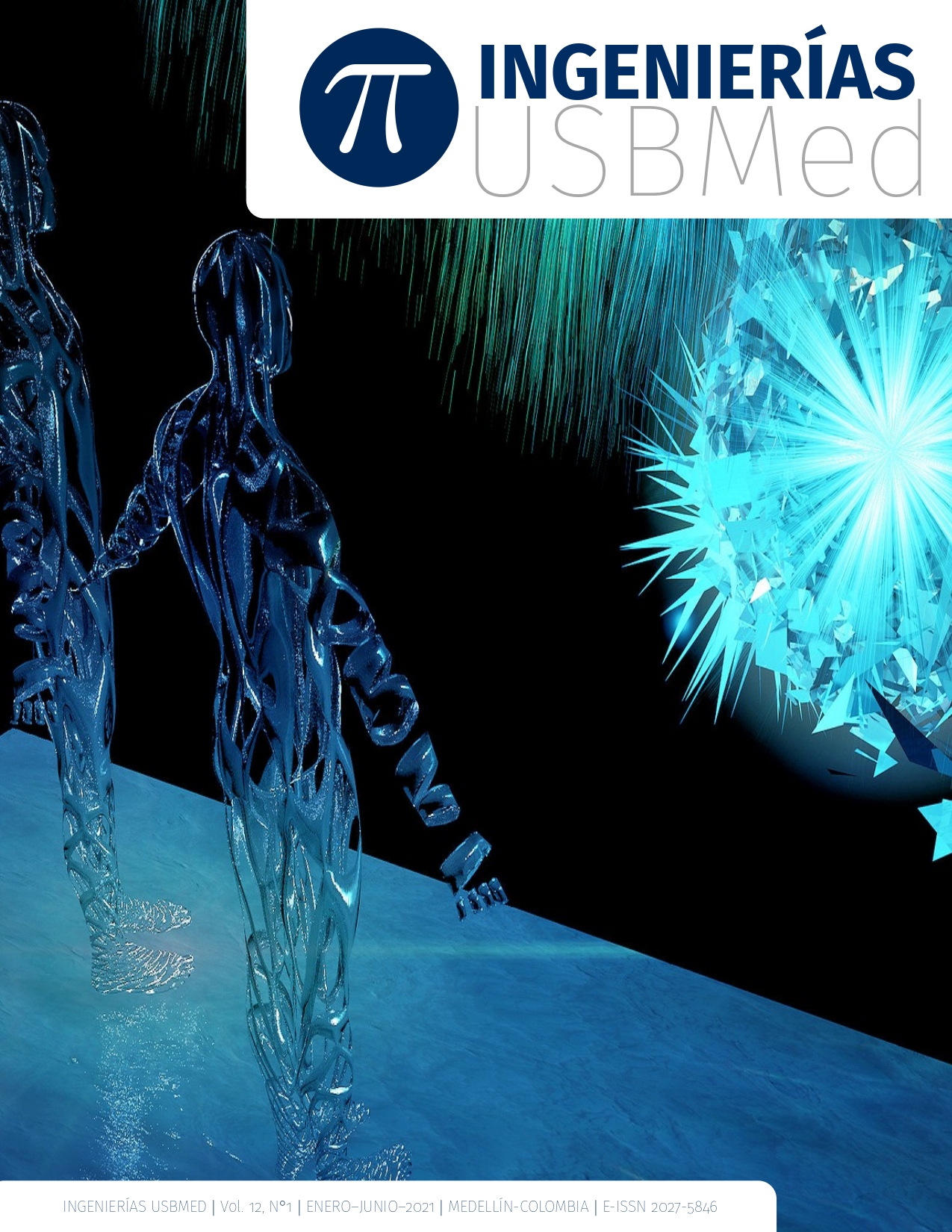This journal provides immediately free access to its contents under the principle that make available the research results for free to the public, helps for a greater global exchange of knowledge.
Therefore, the journal invokes the Creative Commons 4.0
License attributions: Recognition – Non-commertial - Share equal. Commercial use and distribution of original or derivative works are not permitted and must be done with a equal license as the one that regulate the original work.
Abstract
In this paper, the study of linear elasticity is proposed in a nano reinforced composite material subjected to a constant external force in order to be used in the manufacture of lower limb prostheses, for which a computational algorithm was developed that solves the equation of linear elasticity (Navier equation), using the boundary element method and radial base functions.
It was determined if the use of an algorithm can predict the change in a two-dimensional geometry at the level of deformations, displacements and stresses in a composite material reinforced with carbon nanotubes used in the manufacture of lower limb prostheses and demonstrate compliance with the desired requirements when subjected to constant force. Therefore, with the implementation of the algorithm and the analysis of the information obtained, the selection process of a nano-reinforced composite material for use in the development of lower limb prostheses is supported when subjected to constant force. According to the algorithm developed and the results found, the boundary element method allows the simulation of the mechanical behavior of a composite material (A36 steel, at carbon nanotube concentrations of 1%, 2%, 3%)
References
[2] E. Bekyarova, . N. Yingchun y E. Malarkey, «Applications of carbon nanotubes in biotechnology and biomedicine,» J Biomed Nanotechnol,, vol. 1, nº 1, pp. 3-17, 2005.
[3] J. Chiad, . S. Wajdj y J. Abbas, «Effect of the carbon nanotube (CNT) in the materials used for prosthetics and orthotics applications,» International Journal of Energy and Environment, vol. 9, nº 3, pp. 283-294, 2018.
[4] D. Tasis, Carbon Nanotube - Polymer Composites, RCS Publishing, 2013.
[5] S. Polizu, O. Savadogo, P. Poulin y Y. L'hocine., «Applications of carbon nanotubes-based biomaterials in biomedical nanotechnology,» Journal of Nanoscience and Nanotechnology, vol. 3, pp. 1883-1904, 2006.
[6] G. Rahman, Z. Najaf y A. Mehmood, «An Overview of the Recent Progress in the Synthesis and Applications of Carbon Nanotubes,» Journal of carbon research, vol. 5, nº 1, pp. 1-31, 2019.
[7] T. McNally y P. Potschke, Polymer - carbon nanotube composites Preparation, properties and applications., Woodhead Publishing, 2011.
[8] J. Laferrier y R. Gailey, «Advances in lower-limb prosthetic technology,» Physical Medicine and Rehabilitation Clinics of North America, vol. 21, nº 8, pp. 87-110, 2010.
[9] K. Samuelsson, T. Outi y A.-L. Salminen, «Effects of lower limb prosthesis on activity, participation, and quality of life: A systematic review,» Prosthetics & Orthotics International, vol. 36, nº 2, pp. 145-158, 2012.
[10] N. Boyard, Heat Transfer in Polymer Composite Materials Forming Processes, Wiley, 2016.
[11] B. Duleba y L. Dulebova, «Simulation and evaluation of carbon/epoxy composite systems using FEM and tensile test,» Procedia Engineering, vol. 9, pp. 70-74, 2014.
[12] J. Ferzinger y M. Peric, Computational methods for fluid dynamics, Springer, 2012.
[13] M. Subrata, «Boundary element methods in solid mechanics - a tribute to frank rizzo,» Electronic Journal of Boundary Elements,, vol. 1, nº 1, pp. 47-45, 2003.
[14] S. Timoshenko y J. Goodier, Theory of Elasticity, McGraw Hill, 1951.
[15] N. Schclar , Anisotropic Analysis Using Boundary Elements, South Hampton: Computational Mechanics Publications, 1994.
[16] Y. J. Liu y X. L. Chen, «An advanced 3d boundary element method for characterizations of composite materials.,» Engineering Analysis with Boundary Elements, vol. 35, nº 1, pp. 69-81, 2005.
[17] P. Lingyun, D. Adams y F. Rizzo, «Boundary element analysis for composite materials and a library of green's functions,» Computers & Structures, vol. 66, nº 5, pp. 685-693, 1998.
[18] S. R. Bakshi, D. Lahiri y A. Agarwal, «Carbon nanotube reinforced metal matrix composites - a review,» International Materials Reviews, vol. 55, nº 1, pp. 41-64, 2010.
[19] G. F. Karlis , . A. Charalambopoulos y D. Polyzos, «An advanced boundary element method for solving 2D and 3D static problems in Mindlin's strain‐gradient theory of elasticity,» International Journal of Numerical Methods in Engineering, vol. 83, nº 11, pp. 1407-1427, 2010.
[20] J. Katsikadelis, Boundary elements theory and applications, Elsevier, 2002.
[21] P. Patridge, C. Brebbia y L. Wrobel, The dual reciprocity boundary Element Method, Computational mechanics publications, 1991.
[22] W. Chen y M. Tanaka, «A meshless, integration-free, and boundary - only RBF technique,» Comput. Math. Appl, nº 43, pp. 379-391, 2002.
[23] R. Vertnik y B. Sarlet, «Meshless local radial basis function collocation for convective-dissusive solid - liquid phase change problems,» Int. J. Numer. Methods Heat fluid Flow, vol. 16, nº 5, pp. 617-640, 2006.














